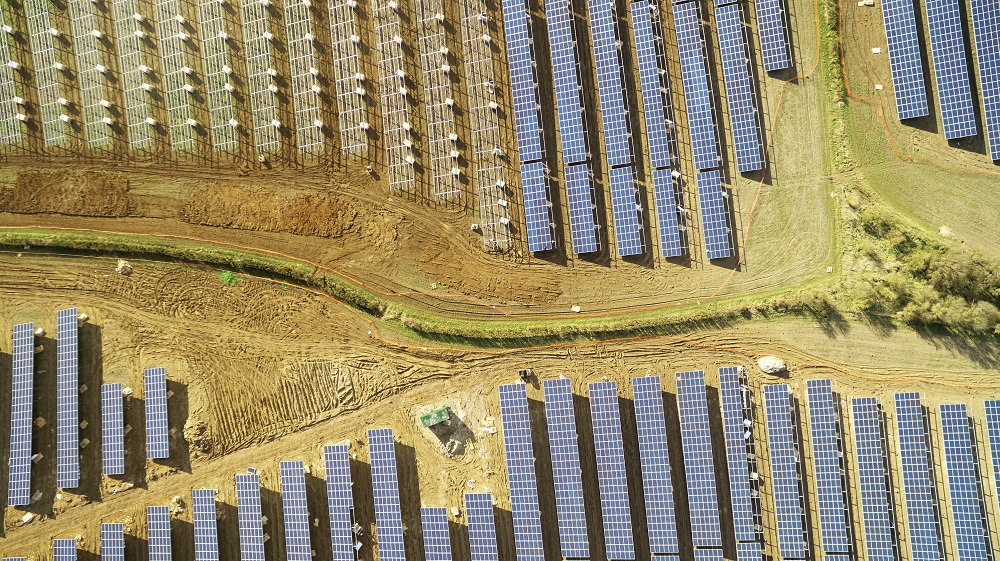
Cowdown solar farm. Image: Solarcentury.
It’s good news for the UK’s low-carbon future that the Government wants to include solar into the CfD scheme. A successful solar scheme will see plenty of low-carbon electricity being built at a highly competitive cost and – just as importantly – will create much-needed local jobs.
However, critical design changes will be needed to the scheme and adjacent policies for CfDs to be a solar success. CfDs have historically been designed to suit wind more than solar. And let’s not forget that the last time solar was shoe-horned into this scheme, nothing got built. So what needs to change?
1. A CfD scheme that doesn’t support batteries will result in solar-only deployment. And with mass solar and no storage we’ll see cannibalisation, negative pricing, and a drop in investor confidence in the sector. This is clearly not the desired result. If we’ve learned anything in the energy sector from the dramatic drop in demand resulting from COVID, it’s how the UK energy market might perform with a larger percentage of renewables on the grid. It could be so much better. The Government doesn’t need to look far to see excellent examples of market design that promotes low-carbon flexibility through batteries (Italy, Ireland).
2. A CfD scheme with auctions every two years will prove an irrelevance to solar. Bear in mind that solar and storage projects can now be built without subsidy and the main advantage of a CfD scheme that includes solar is to act as a catalyst to accelerate deployment and bring in more schemes through creating investor confidence. But if the timetable doesn’t match solar timetables (which are typically much shorter than wind) it will be ignored by solar which needs to apply to auctions every 6 months to fit with development timescales.
3. If the key to property is location, location, location, then the key to CfDs is investor confidence, confidence, confidence. The allocated budget, caps – maxima and minima, and administrative strike prices all need to be aligned to permit the maximum delivery of installed capacity whilst maintaining certainty in the future financial commitment being made. No-one wants to see a cycle of boom and bust, or the scheme shortened due to an overspend on budget.
4. The CfDs won’t work in isolation. And whilst it’s not part of the consultation, attention also needs to be paid to investment in the grid (which will certainly benefit from co-located storage). It’s also critically important to align the planning process with the priority we want to give renewable projects.
Our fingers are firmly crossed that the Government is listening to the sector and takes the necessary steps to make CfDs work; what a positive step this would be for a post-pandemic recovery; positive for our environment, for jobs, and for a healthier future.

